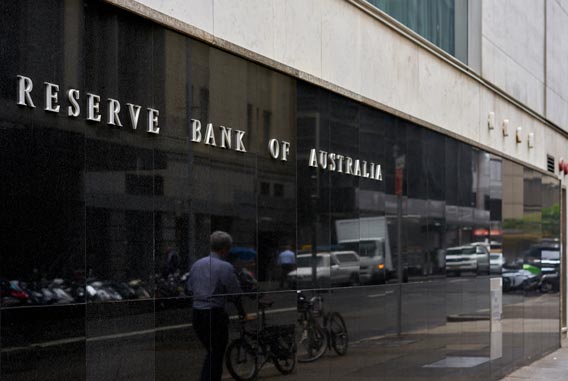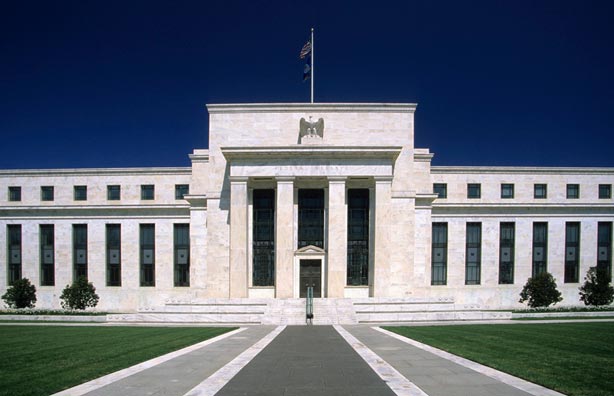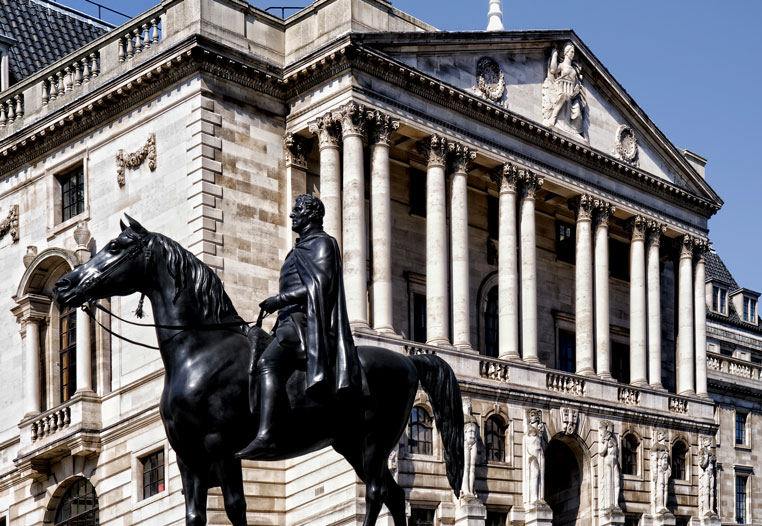We look at the latest from the RBA in the light of current international issues.
https://www.rba.gov.au/media-releases/2020/mr-20-01.html
Digital Finance Analytics (DFA) Blog
"Intelligent Insight"
We look at the latest from the RBA in the light of current international issues.
https://www.rba.gov.au/media-releases/2020/mr-20-01.html
At its meeting today, the Board decided to leave the cash rate unchanged at 0.75 per cent.

The outlook for the global economy remains reasonable. There have been signs that the slowdown in global growth that started in 2018 is coming to an end. Global growth is expected to be a little stronger this year and next than it was last year and inflation remains low almost everywhere. One continuing source of uncertainty, despite recent progress, is the trade and technology dispute between the US and China, which has affected international trade flows and investment. Another source of uncertainty is the coronavirus, which is having a significant effect on the Chinese economy at present. It is too early to determine how long-lasting the impact will be.
Interest rates are very low around the world and a number of central banks eased monetary policy over the second half of last year. There is an expectation of a little further monetary easing in some economies. Long-term government bond yields are around record lows in many countries, including Australia. Borrowing rates for both businesses and households are at historically low levels. The Australian dollar is around its lowest level over recent times.
The central scenario is for the Australian economy to grow by around 2¾ per cent this year and 3 per cent next year, which would be a step up from the growth rates over the past two years. In the short term, the bushfires and the coronavirus outbreak will temporarily weigh on domestic growth. The household sector has been adjusting to a protracted period of slow wages growth and, last year, to a decline in housing prices, with the result that consumption has been quite weak. Following this period of balance-sheet adjustment, consumption growth is expected to pick up gradually. The overall outlook is also being supported by the low level of interest rates, recent tax refunds, ongoing spending on infrastructure, a brighter outlook for the resources sector and, later this year, an expected recovery in residential construction.
The unemployment rate declined in December to 5.1 per cent. It is expected to remain around this level for some time, before gradually declining to a little below 5 per cent in 2021. Wages growth is subdued and is expected to remain at around its current rate for some time yet. A further gradual lift in wages growth would be a welcome development and is needed for inflation to be sustainably within the 2–3 per cent target range. Taken together, recent outcomes suggest that the Australian economy can sustain lower rates of unemployment and underemployment.
Inflation remains low and stable. Over 2019, CPI inflation was 1.8 per cent and underlying inflation was a little lower than this. The central scenario is for CPI inflation to be around 2 per cent in the near term and to fluctuate around that rate over the next couple of years. In underlying terms, inflation is expected to increase gradually to 2 per cent over the next couple of years.
There are continuing signs of a pick-up in established housing markets. This is especially so in Sydney and Melbourne, but prices in some other markets have also increased. Mortgage loan commitments have also picked up, although demand for credit by investors remains subdued. Mortgage rates are at record lows and there is strong competition for borrowers of high credit quality. Credit conditions for small and medium-sized businesses remain tight.
The easing of monetary policy last year is supporting employment and income growth in Australia and a return of inflation to the medium-term target range. The lower cash rate has put downward pressure on the exchange rate, which is supporting activity across a range of industries. Lower interest rates have assisted with the process of household balance sheet adjustment. They have also boosted asset prices, which in time should lead to increased spending, including on residential construction. Progress is expected towards the inflation target and towards full employment, but that progress is expected to remain gradual.
With interest rates having already been reduced to a very low level and recognising the long and variable lags in the transmission of monetary policy, the Board decided to hold the cash rate steady at this meeting. Due to both global and domestic factors, it is reasonable to expect that an extended period of low interest rates will be required in Australia to reach full employment and achieve the inflation target. The Board will continue to monitor developments carefully, including in the labour market. It remains prepared to ease monetary policy further if needed to support sustainable growth in the economy, full employment and the achievement of the inflation target over time.
We discuss the latest political scene, against the economic backcloth and the spreading virus. Yet the latest poles still give the incumbents plenty of hope. And what of Barnaby?
What happens in a low interest rate setting and why banks won’t lend, but speculate.

What happens in a low interest rate setting and why banks won’t lend, but speculate.
The Fed kept the cash rate on hold, and there was little change to the commentary, other than a slightly weaker set of words surrounding the consumer.
Growth in household spending moderated toward the end of last year, but with a healthy job market, rising incomes, and upbeat consumer confidence, the fundamentals supporting household spending are solid. In contrast, business investment and exports remain weak, and manufacturing output has declined over the past year. Sluggish growth abroad and trade developments have been weighing on activity in these sectors. However, some of the uncertainties around trade have diminished recently, and there are some signs that global growth may be stabilizing after declining since mid-2018. Nonetheless, uncertainties about the outlook remain, including those posed by the new coronavirus. Overall, with monetary and financial conditions supportive, we expect moderate economic growth to continue.

Information received since the Federal Open Market Committee met in December indicates that the labor market remains strong and that economic activity has been rising at a moderate rate. Job gains have been solid, on average, in recent months, and the unemployment rate has remained low. Although household spending has been rising at a moderate pace, business fixed investment and exports remain weak. On a 12‑month basis, overall inflation and inflation for items other than food and energy are running below 2 percent. Market-based measures of inflation compensation remain low; survey-based measures of longer-term inflation expectations are little changed.
Consistent with its statutory mandate, the Committee seeks to foster maximum employment and price stability. The Committee decided to maintain the target range for the federal funds rate at 1‑1/2 to 1-3/4 percent. The Committee judges that the current stance of monetary policy is appropriate to support sustained expansion of economic activity, strong labor market conditions, and inflation returning to the Committee’s symmetric 2 percent objective. The Committee will continue to monitor the implications of incoming information for the economic outlook, including global developments and muted inflation pressures, as it assesses the appropriate path of the target range for the federal funds rate.
In determining the timing and size of future adjustments to the target range for the federal funds rate, the Committee will assess realized and expected economic conditions relative to its maximum employment objective and its symmetric 2 percent inflation objective. This assessment will take into account a wide range of information, including measures of labor market conditions, indicators of inflation pressures and inflation expectations, and readings on financial and international developments.
Voting for the monetary policy action were Jerome H. Powell, Chair; John C. Williams, Vice Chair; Michelle W. Bowman; Lael Brainard; Richard H. Clarida; Patrick Harker; Robert S. Kaplan; Neel Kashkari; Loretta J. Mester; and Randal K. Quarles.
If you think restricting cash has nothing to do with monetary policy and negative interest rates, then watch this.
We look at a recent CNN Business article looking at the Swiss.
Time to buy a safe?
[Recorded in a thunderstorm…]
The Reserve Bank will consider quantitative easing once rates fall to 25 basis points. It’s a tool that has been used by other countries, often with devastating consequences for society. Via InvestorDaily.

Australia is in uncharted territory, economically speaking. We’re latecomers to the low-rate party and we’re still getting used to it. Home owners are loving it but retailers are not. Unemployment is low but a record number of Aussies want to work more. It’s a strange time.
The Reserve Bank of Australia only has a few options left if it fails to hit its inflation target and lift economic growth. It can continue to reduce the cash rate and even go into negative rates, as the European Central Bank (ECB) had done. The ECB benchmark deposit rate was cut by 10 basis points in September to negative 0.5 per cent. The ECB also reintroduced its quantitative easing program of buying 20 billion euros ($32 billion) worth of government and corporate bonds every month in an effort to prevent the European economy from sliding off a cliff.
The ECB has been using QE on and off since 2009 in an effort to lift inflation. In 2015 the central bank began purchasing 60 billion euros worth of bonds each month. This increased to 80 billion euros in April 2016 before coming back down to 60 billion a year later.
In the UK, the Bank of England bought gilts (British government bonds) and corporate bonds during its QE program during the global financial crisis in 2009. QE programs also took place in 2011 and 2016.
Meanwhile, the US Federal Reserve has undertaken three separate rounds of QE, the last of which it began tapering in June 2013. The US halted its program in October 2014 after acquiring a total US$4.5 trillion of assets.
When a QE program takes place, a central bank begins buying securities with money that didn’t exist before the QE process began. They are essentially printing money and giving it to large corporates and the government through the purchase of these bonds, the logic being that the proceeds will be used to buy new assets (like mortgages) and invest, which in turn will drive the economy.
The money doesn’t directly hit the wallets of consumers. Unlike “helicopter money”, which the Rudd government dished out during the financial crisis, QE has a much more indirect impact on consumers. Financially speaking.
But the broader political and social impacts have had a lasting psychological effect on the populations of Europe and the US.
“If we look at the experience offshore, QE has been great at raising the level of assets in conjunction with a permanently lower interest rate,” Fidelity International’s Anthony Doyle said this week.
“QE has stimulated asset price growth. The ‘haves’ have benefited compared to the ‘have nots’; income inequality has grown across the economies that have implemented quantitative easing and socially we have seen big shifts to the Right or to the Left in terms of the political spectrum.
“If you think about Donald Trump, Elizabeth Warren, Bernie Sanders, Jeremy Corbyn, Brexit, Boris Johnson. The next decade could be characterised by moves to the Right or Left here as well if we follow a path that other economies have pursued.”
AMP Capital chief economist Shane Oliver told Investor Daily that QE “probably helps people who have shares and property more than it does people who have bank deposits.”
Prior to the election of Mr Trump in 2016, Luis Zingales of the University of Chicago Booth School of Business told Bloomberg that central bank policies are largely to blame for the rise of populism.
Here in Australia, the Reserve Bank will have to consider the impact that QE could have on a society that has witnessed a banking royal commission that exposed widespread misconduct within the financial services industry.
If the impact on Europe and the US of QE on the people is anything to go by, Australia is well placed to split down the middle and begin gathering on the far edges of the political spectrum.
We were late to the low rate party. We might just be late to the populism party too.
Economist John Adams and Analyst Martin North look at recent Hansard records where the Banks discussed their plans for negative interest rates.
The link between the Cash Restrictions Bill and potential Negative Rates are very real, no conspiracy theory here – but fact!
Following the monumental Conservative election victory, now is the time for the economics to work through. Mark Carney is due to leave his post as governor of the Bank of England at the end of January after six and a half years in charge, and the chancellor, Sajid Javid, will be choosing a replacement soon – perhaps before Christmas. Via the UK Conversation.

This will be a pivotal decision for the chancellor – no doubt in close consultation with Boris Johnson and his advisers. Whoever they pick should not expect a honeymoon period. They are arriving against the backdrop of Brexit, widening regional inequality and the prospect of a downturn in the global economy.
The frontrunners are said to be Minouche Shafik, director of London School of Economics; Kevin Warsh, a former top official at the US Federal Reserve; and Andrew Bailey, chief executive of UK regulator the Financial Conduct Authority. Add to these names Jon Cunliffe and Ben Broadbent, both currently deputy governors at the Bank. Behind this sits a couple of more alternative candidates: Santander chair and former Labour minister Shriti Vadera and Boris Johnson’s former economic adviser, Gerard Lyons.
An alternative governor may be just the required medicine at present, since there is a strong case for someone willing to think differently about central bank management. With interest rates still very low in the UK and most other developed economies, there are widespread concerns that central banks will be unable to fight another downturn using the classic response of cutting rates.
Beyond this, there are arguments for revising the entire model of central banking. In recent years, the trend has been for them to manage rates without any political interference and to concentrate purely on keeping inflation low. Indeed, it is almost 30 years to the day since the Reserve Bank of New Zealand became the first central bank to make inflation the sole priority.
In times of inflation, this system made sense. But since the 2007-08 financial crisis, the world has found itself in a situation where economic growth is much weaker and deflation is more of a risk than inflation.
As former Federal Reserve chair Ben Bernanke said in a speech in Tokyo in 2003, “in the face of inflation … the virtue of an independent central bank is its ability to say ‘no’ to the government”, but with protracted deflation of the kind that has continually dogged Japan, “a more cooperative stance” by central banks towards the government is required.
His argument was essentially that it’s hard to sustain inflation by manipulating interest rates, and that you’re more likely to be successful using the fiscal levers of government spending and tax cutting. The same approach is arguably required in the UK today and across the developed world.
Having lost the ability to properly stimulate the economy using interest rates, the Bank of England and other central banks have taken it in turns to resort to quantitative easing – essentially creating money with which to buy mainly government bonds from banks and other financial institutions. This was supposed to drive extra liquidity into the economy, but mainly it has just been used to bid up prices in the likes of the bond market and stock market and exacerbate the wealth gap.
As an alternative, some commentators are now touting “helicopter money”: this would involve central banks creating money that would be handed straight to the public via government tax cuts or public spending – thus requiring them to coordinate their policies in a way that does not happen at present.
This could be pursued in conjunction with a novel concept called “modern monetary theory”, which envisages government targets to boost demand and inflation financed by a disciplined central bank that keeps interest rates at zero. We are already seeing signs of the government moving in the same direction by shifting away from austerity towards more generous spending.
As for the Bank of England’s own targets, greater policy cooperation with the government would provide wiggle room for focusing beyond inflation. In particular, the Bank could play a role in addressing regional inequality. The UK already has the one of the worst rates of regional inequality in the developed world, with areas like the north of England and West Midlands bringing up the rear. This will be heightened by leaving the EU, since these same areas are key to international supply chains and expected to be the worst hit.
The answer is for the government to pursue an industrial policy that aims to improve productivity in regions where it is weakest, through the likes of targeted tax breaks and economic development zones, with an accommodating Bank of England providing the funding to facilitate.
More productive areas attract more capital, which is the reason behind the north-south divide in the first place. Such an industrial policy would encourage more investment in these areas, produce real-wage increases, boost local demand and stimulate regional development. In short, it would help counteract the impact of Brexit.
Two central criteria for the appointment of the next Bank of England governor stand out. First, they must understand the deeper economic and social circumstances that have led to Brexit and the UK’s shift to the right. They must act as governor for the whole country and not just for London plc: a move away from focusing on smoothing short-term fluctuations towards prioritising long-term growth.
Second, the job specification for the next governor says that the candidate should have “acute political sensitivity and awareness”. This might suggest that the government does not want another governor with such outspoken views on say, the economic risks from Brexit. Be that as it may, policy coordination needs to be a priority. I don’t rule out the possibility of the leading candidates being able to work like this, but I worry that they will be too orthodox for the challenge. The government should recognise the shifting sands in central bank policy and appoint someone who is willing to lead from the front.
Author: Drew Woodhouse, Lecturer in Economics, Sheffield Hallam University